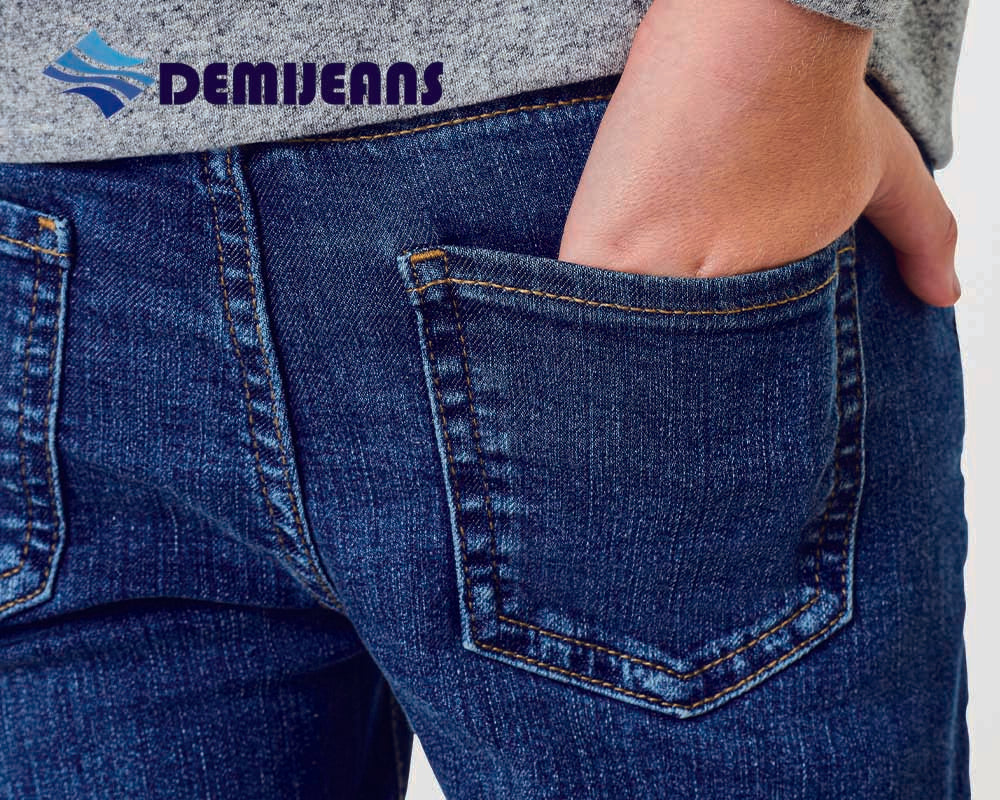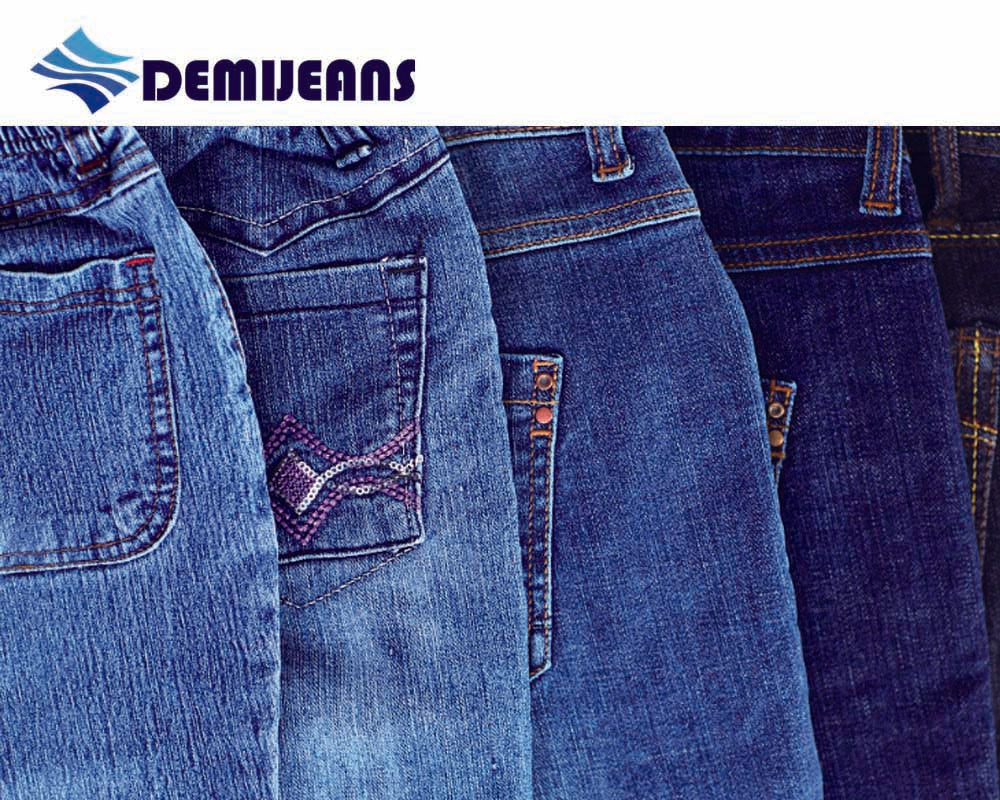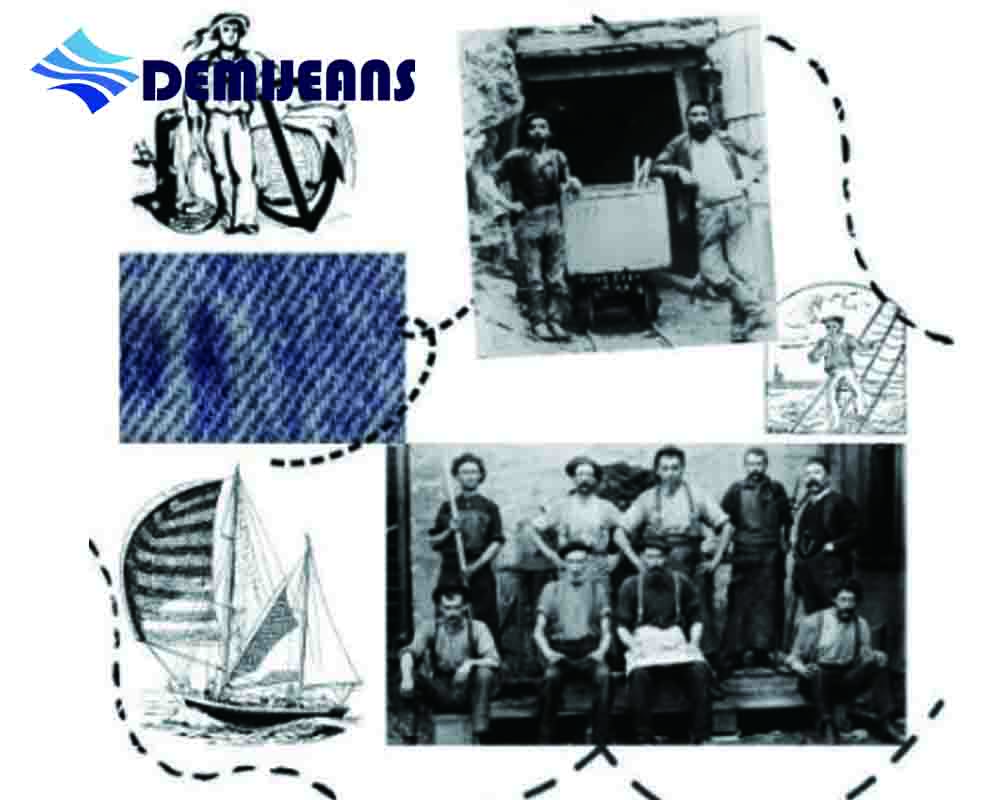"The name of the denim fabric comes from the city in southern France: Nimes."
The specialty here is the weaving of thick and strong twill fabric called [twill serge of Nimes], and [de Nimes] originally meant "produced in Nimes", and later the word evolved into [Denim]. Originally made of thick cotton in the UK, dark blue or brown yarns were used in the warp direction, and bleached yarns were used in the weft direction. Because it was strong and durable, it was used by sailors and workers to make clothing, and later became the work clothes of pioneers in the American West. As work clothing for workers during the peak of the gold rush: jeans were initially made of thick canvas from carports and tents, and later switched to indigo-dyed denim. Among them, Levis' jeans are very famous.

"The reason why denim is dyed with indigo is said to be because natural blue has the effect of repelling snakes and insects."
Today, denim is mainly dyed with synthetic indigo dye. The "fading" of denim is one of its charms, and the "warp fading" is its characteristic. This is because the center of the warp of denim has not been completely dyed, and the remaining white color in the center of the yarn is called the "mid-white" phenomenon. After repeated washing and fading, the white inside gradually appears. In particular, the [retro-style denim] woven with old shuttle looms, the faded blue and white color is a perfect match, and is deeply loved by denim enthusiasts. The fading process shows the degree of fading in the order of [wash], [fade out], and [rinse]. There are also washing methods such as [stone washing] and [chemical washing]. Those who are against fading and want to be clean include [shiny silk denim] and [fading-resistant denim]. There are also deep navy blue denim that uses special yarn and [reactive dye] that is not easy to fade.
02 .knit denim
The structure of denim
The weave of conventional denim is [right twill (positive twill)] from the lower left to the upper right, but different weave methods are chosen according to the preferences of different denim product manufacturers.
For example, Levi's chooses [right twill (forward twill)],
LEE (李) chooses [left twill (reverse twill)],
Wrangler uses the [broken card] weaving method, so the denim of this weave is called [broken card denim].
The twist of single yarn is usually left twist (Z twist). When weaving with the opposite right bias method, it is easy to cause the yarn to relax, which in turn causes the cloth surface to look rough. If we use the same left bias weave method, It will strengthen the twist of the yarn, so that the woven cloth surface will be smoother, smoother, glossier and softer. After repeated washing, the washing marks at the seam ends become stronger, and the denim products show a unique [longitudinal fading] effect. Although card breaking is a weaving method that destroys the normal twill weave pattern, the cloth woven by this method has a smooth surface and a soft hand, and there will be no weft skew like twill weave.







